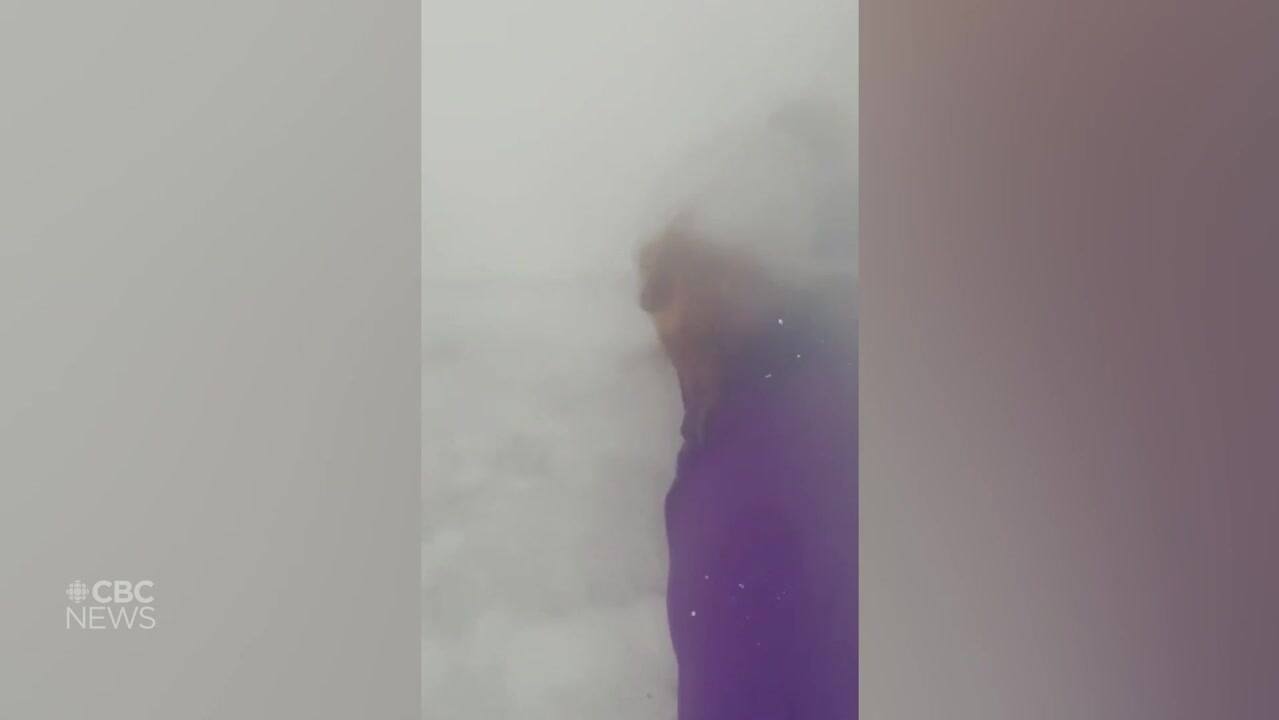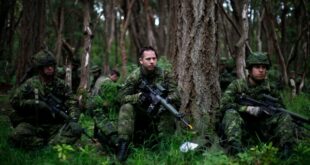It’s about taking calculated risks, capturing stunning images and being there to help, says Sask. storm chaser.

Jenny Hagan drove through the night from one side of Saskatchewan the other in mid-August to put herself in the path of a potentially dangerous storm.
She’s carried splints and bandages in case anyone had been injured. She has a device for measuring wind speed, and a variety of cameras, tripods and recording gear. Her mission was to document this extreme weather event, and report on it for her social media channels.
“I chase storms, because I’ve always had a zest for adventure,” she explains. “So it gets me out and I get to see just about every inch of our Prairies out there. And I’ve always liked to kind of push boundaries and do things that are maybe not typical.”
As climate models shift, Hagan is part of a group of independent storm chasers who document extreme weather. More a calling than a business, the financial incentives are not particularly strong. But putting one’s self in front of a tornado, photographing it, measuring it, and jumping in to help the injured and displaced in its wake is the reward she said she seeks.
The married mother of two teens has been interested in extreme weather since she was a child. When the pandemic forced the closure of her photo studio in Kindersley, Sask., she decided to go all in. She taught herself how to interpret the raw data collected by weather agencies and researchers, and contribute her own observations.

“It’s important for us to understand weather and how it affects people. To be able to keep people safe and make changes in our warning systems,” Hagan said.
Creating strong role models
Storm chasing used to be the domain of professional meteorologists, mostly men. But the 1996 movie Twister, which depicted the role of a female scientist played by actor Helen Hunt, captured the imaginations of women around the world.

“When I first started storm chasing it seemed as though there weren’t very many women in the storm chasing universe, or at least I couldn’t find them and it struck me as odd,” notes Jen Walton, a Colorado-based extreme weather chaser and climate change specialist.
Her goal was to inspire and empower women, creating community and a support system.
“As I moved on in my storm chasing journey and discovered there were a lot of other issues at play such as lack of engagement, lack of media representation, [and] other issues relating to gender around in the storm chasing universe,” Walton said.

The response was overwhelming, she said. The group has grown to 250 contributors from 15 countries, including Kuwait. Walton said it reflects her theme of empowerment.
“I think storm chasing is a badass and engaging way of showing women doing science, because it takes guts to get out there and chase a storm,” she said. “It takes believing that you have the skills, believing that you can keep yourself safe.”
Unique challenges
Storm chasing is an inherently risky business, but not for the reasons most would assume.
Of the 13 chasers killed since 2005, all but three perished in vehicle collisions, according to a review of media reports and data from the website Stormtrack.com.
Shannon Bileski, who is based in southern Manitoba, sees other drivers as the riskiest part of her job.

There are also the dangers faced by women travelling along, often in isolated areas or while sleeping in their vehicles along the highway.
“It’s very concerning,” said Walton. “Somebody could be coming along who’s more powerful and bigger and has ill intentions. You’re a female alone. I do take some precautions.”
“So they know if they get a text message from me, a certain one with my GPS location, that is indicative of the fact that I need help. So my GPS location is in that SOS message. They know exactly where I am and they can come around if I need them.”
Lightning and hail also pose significant hazards. Hagan’s compact SUV bears the dimples of a severe hailstorm.

Storm chaser Jenny Hagan shows the winter storm that continues to batter western Saskatchewan
Storm chaser Jenny Hagan says visibility is still practically zero near Kindersley, Sask. She echoes the Highway Hotline’s warnings and says people should stay off the road right now.
Shannon Bileski of Portage la Prairie, Man., carries a hardhat in case she’s caught in a hail storm, and an automated external defibrillator, in case she or anyone around her is struck by lightning.
“I’m out there pretty close to lightning. And I always tell family and friends … if I get hit by lightning and I I don’t make it, you know what? I died happy.”
It’s about the image
Bileski, who works as a data analyst, spends as much time as she can spare on the road, tracking severe weather and searching for the perfect photograph.
“There’s nothing more beautiful than just going out and seeing that storm … just being at peace and calm and, you know, being able to share what I see with others,” she explains. “There’s something magical, majestical about being under storms and just seeing that going on around you and feeling that peace and calm and just the beauty.”
Hagan’s 700-kilometre journey across Saskatchewan this summer came to a close in a wheat field east of Regina. There are no tornadoes, lightning or hail to capture. This storm brought intense winds and little more.
Climate change is shifting the environment for storm chasers. Saskatchewan has seen substantially fewer tornadoes this year, according to the Northern Tornado Project at Western University in Ontario, while B.C. and Alberta have faced record setting forest fires.
Hagan, who’s teaching her 17-year-old daughter to chase, remains optimistic about the impact of climate change.
“My children’s generation are very well aware of what’s happening in this world. And we’ve seen them probably highly proactive in changing that. So they might have a huge influence on what we’re going to see in the next twenty years.”
In the meantime, she plunks down a tripod and mounts her camera on a time lapse, capturing images of a wheat field looking like an ocean of gold rippling in the wind.
ABOUT THE AUTHOR

Network News Producer
Terry Reith is CBC’s network news producer based in Edmonton. He’s also served as the network’s medical reporter, and senior writer for the consumer section of cbc.ca. Reith joined the CBC in 1992 as a local radio and television reporter.
*****
Credit belongs to : www.cbc.ca
 Atin Ito First Filipino Community Newspaper in Ontario
Atin Ito First Filipino Community Newspaper in Ontario






